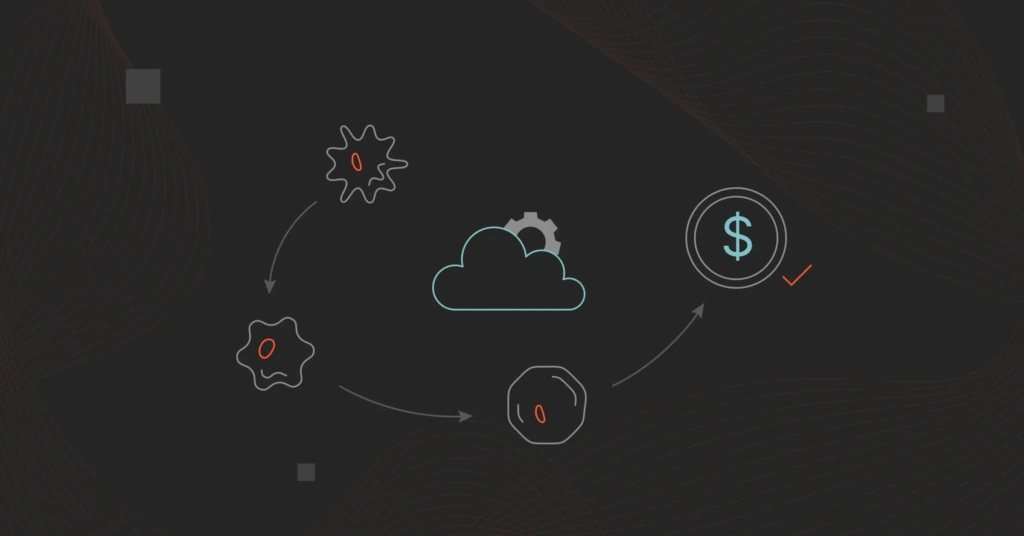Over the past decade, the cloud computing landscape has transformed remarkably, evolving from a nascent technology into a fundamental component of modern digital infrastructure. As the technology has evolved, so too has the need to develop complex cost optimization strategies.
A decade ago, businesses grappled with the complexities of brand-new cloud services, often facing challenges in managing costs due to opaque pricing models and a limited understanding of cloud economics. Today, we stand at a juncture where cloud cost optimization strategies and technologies have significantly advanced, offering sophisticated solutions to these early challenges.
This article aims to trace the evolution of these strategies and tools, highlighting key milestones and innovations that have reshaped how businesses manage their cloud expenditures.
From the early days of basic cost management to the current era of advanced analytics and automation, the journey of cloud cost optimization reflects a broader narrative of technological growth and adaptation.
The Early Days Of Cloud Computing
In the early days of cloud computing, the landscape vastly differed from what we know today.
In the early 2010s, cloud technology was still emerging, often perceived as a novel yet uncharted territory for many businesses. This period was marked by a lack of clear guidelines and best practices for managing cloud resources, leading to uncertainty and improvisation.
Businesses venturing into the cloud during this era encountered numerous challenges, including:
- Complex Pricing Models – With various pricing schemes and hidden costs, organizations found it difficult to predict and manage their cloud expenses effectively.
- Lack Of Sophisticated Cost Management Tools – Businesses had to rely on basic methods, such as spreadsheets and manual monitoring, to track their cloud usage and expenditures.
- Limited Understanding Of Cloud Economics – Many organizations were navigating this new terrain without comprehensive knowledge, leading to inefficient resource usage and escalated expenses.
- Reactive Cost Management Approaches – The industry’s early solutions addressed cost issues after they had already impacted the budget.
The general lack of expertise in cloud economics further complicated this rudimentary approach to cloud cost management.
As we progressed through the decade, the need for more advanced cost-optimization strategies and tools became increasingly apparent. The challenges faced in the early days of cloud computing set the stage for developing more sophisticated solutions, paving the way for more innovations and advancements.
Emergence Of Specialized Tools And Services
The rise of cloud computing made one thing clear: a burgeoning market looking for help with optimizing costs was being created.
This transition marked a pivotal moment in addressing the challenges businesses faced in the early days of cloud computing. The new technologies were adept at resolving specific issues, such as:
- Enhanced Visibility – Offering clear insights into cloud usage and expenses.
- Customized Reporting – Providing tailored reports to help businesses understand and manage their cloud costs better.
- Optimized Resource Utilization – Identifying and eliminating wasteful spending by optimizing resource usage.
These specialized tools and services represented a leap from the previously employed basic methods. No longer reliant on spreadsheets and manual tracking, organizations could now utilize sophisticated platforms that offered comprehensive insights into their cloud spending.
This evolution was crucial in transitioning from a reactive to a more proactive and informed approach.
As these tools became more refined and integrated, they paved the way for the next generation of cloud cost optimization strategies, laying a foundation for the advanced analytics and automation that would soon reshape the landscape of cloud computing economics.
The Rise Of Automation And AI In Cost Management
The transition into the mid-to-late 2010’s marked another pivotal evolution in cloud cost management with the rise of automation and AI. This era introduced a transformative approach to handling cloud expenses, targeting specific issues that were previously challenging to address.
The key areas where automation and AI made a significant impact include:
- Predictive Analytics – Utilizing AI to forecast future cloud spending, enhancing budgetary accuracy and planning.
- Anomaly Detection – Identifying unusual cost spikes through automation monitoring, aiding in early detection of issues.
- Resource Optimization – Automating resource allocation and scaling based on real-time usage data and ensure cost-efficiency.
Integrating these technologies meant businesses could now leverage AI’s predictive capabilities and automation’s efficiency to manage cloud costs more effectively. This era of advanced analytics streamlined cloud cost management processes and provided deeper insights, enabling more strategic decision-making.
Despite the obvious improvements provided by AI and automation, along with the natural refinement of the industry as it continued to evolve over the years, there was still a lack of centralization around the improvements in cost optimization. Organizations craved a platform incorporating all of the decade’s innovations and improvements into one system.
How CloudZero Is Revolutionizing Cost Optimization
The need for a single-pane-of-glass solution gave rise to the CloudZero platform, which encapsulates the past decade’s advancements in cloud cost optimization. By integrating the key innovations and improvements from the past ten years, CloudZero offers a centralized solution that addresses the diverse needs of modern businesses.
The platform stands out by seamlessly blending the early advancements of enhanced visibility and customized reporting with the later developments of AI-driven predictive analytics and automation. The platform provides:
- Comprehensive Visibility – Offering a holistic view of cloud expenses across various services, CloudZero goes beyond basic monitoring, deliver clear insights into usage and spending patterns.
- Customized And Automated Reporting – Leveraging AI, the platforms generate tailored reports, enabling businesses to effectively understand and manage their cloud costs.
- Predictive Analytics And Anamoly Detection – CloudZero utilizes AI to forecast future spending and detect unusual spending patterns, providing an early warning system for potential cost overruns.
- Resource Optimization – The platform automates resource allocation, ensuring cost-efficient utilization based on real-time data, a stark contrast to the manual optimization strategies of the past.
- Centralized Cost Management – Perhaps the most significant advancement CloudZero offers is unifying all these features into a single platform, addressing the industry’s need for an integrated solution.
CloudZero’s approach represents a culmination of a decade’s worth of progress in cost optimization. CloudZero caters to modern businesses’ need for a comprehensive, easy-to-use, and effective solution by offering a platform that combines enhanced visibility, AI-driven insights, and automated resource management.
With a customer base that’s growing exponentially, along with a dedication to innovation and industry-leading technology, businesses should look to  so that they too can reap the rewards of modern cost optimization!
so that they too can reap the rewards of modern cost optimization!








